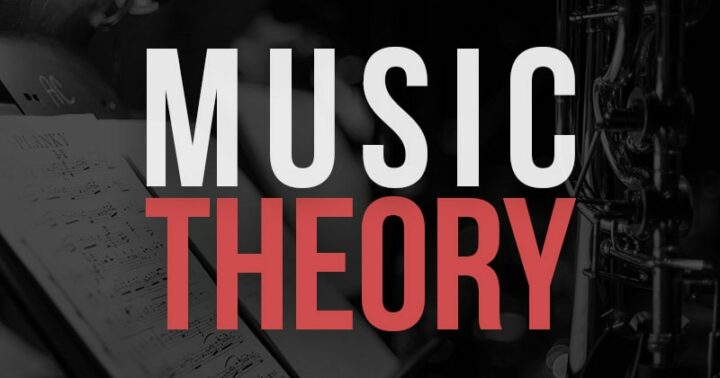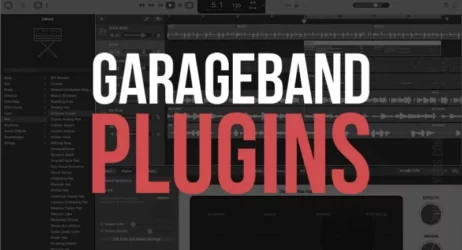This beginner’s guide will answer what is music theory, the fundamentals, its rules, and how to learn music theory.
What Is Music Theory?
Music theory is a study of the principles of music and music composition. It helps musicians gain knowledge to understand scales, harmony, melody, and rhythm patterns in music. Music theory is a way for composers to better understand the various elements in music and why they are important.
- What is Music Theory
- The Basics of Music Theory
- What Are Music Theory Intervals
- What Are Music Theory Modes
- How to Learn Music Theory
- How Fast Can You Learn Music Theory

What is Music Theory?
In simple words, music theory is the musical practice for musicians to understand and communicate the musical language.
One thing to note when we discuss musical theory is that music came first. Remember, music came many years before the music theory.
So we should not get demoralized if we are not good at music theory. Someone is a good musician, then he or she already knows a lot of theory.
The concepts, rules, and everything we talk about in music theory can be compared to all the grammatical rules and regulations that are used in our written language.
It is also important to remember that the grammatical rules that govern written language also came after people had already successfully learned how to talk with one another.
Just like transcribing the language allowed people far away from each other to know what the people are talking about and what the author wants to say. The same thing goes with the music field as well.
As we have now been able to transcribe the music, it helps the musicians read and play a musical composition properly and exactly as the composer wants to.
Learning to read music is almost like learning a certain language to a level such that a person can hear a musical conversation when reading a piece of sheet music.
There are many people in the world who can’t read or write properly, but still, they can communicate very well with each other. Similarly, there are musicians who are self-taught and have never learned to write or read music in the music field.
Some of them might think that the whole idea of learning the music theory is a tiresome task and unnecessary.
But still, it is good to learn about music theory in order to build a strong foundation. Just like learning to read or write can open many doors in the educational field.
In a similar way, learning properly about music theory can allow the musicians to learn many new techniques, perform unfamiliar styles of music, and also develop confidence in them.
What Are The Basics of Music Theory to Learn?
Here are some of the basics of Music Theory that one can learn:
Harmony – Harmony in music means when multiple notes or voices play simultaneously to produce a new sound.
Melody – This is a collection of musical tones that group together as a single entity.
Rhythms – It is a pattern of sound, silence, and emphasis in a song.
Pitch – It is a quality that allows us to judge whether a sound is high or low in the sense associated with musical melodies regarding musical instruments and sound.
Scale – It is a set of musical notes arranged in order.
Chords – When two or more different notes are played together at the same time on a musical instrument are known as chords.
Chord Progressions – It is a series of chords played in a sequence.
Musical Notation – Music notation is a series of symbols and markings that help the musicians to know to play the music.
Key Signature – It is the arrangement of sharps or flat signs on particular lines or spaces of a musical staff. It indicates that the corresponding notes in every octave are to be raised or lowered from their natural pitches.
What Are Music Theory Intervals?
In music, an interval is nothing but the distance in pitch between any two notes. The more is the interval between any two notes, and the more is the difference in pitch between the notes.
What Are Music Theory Modes?
A mode is a type of scale. Modes are the alternative tonalities that we obtain from the familiar major scale by starting at a different scale tone. They are the permutations of the parent scale.
For example, a scale is formed by the combination of eight successive notes. Then do all the eight notes make a scale? Not necessarily.
As we get past the major and minor scales, all the other eight-note combinations aren’t scales, but they are called notes.
The major scale contains 7 modes as follows:
- Ionian
- Dorian
- Phrygian
- Lydian
- Mixolydian
- Aeolian
- Locrian
To understand the modes, let’s discuss the Dorian mode. It starts on the second degree of the major scale.
So considering the C major scale, the Dorian mode starts on D and continues to go upward like this: D, E, F, G, A, B, C, D.
On the other hand, the Phrygian mode starts on the third degree of the Major scale. So considering the C major scale, it would be like this: E, F, G, A, B, C, D, E.
Modes are important, especially while constructing the Melodies. When melodies are created based on a specific mode, we get to create a different sound or feel simultaneous, staying within the notes of a traditional major scale.
How to Learn Music Theory?
Music theory can be a vast and complex subject. There are several concepts, disciplines, topics that you have to understand in order to learn music theory.
To not complicate things, it is always best to start from the fundamentals. Then it is good to go and explore the advanced music theory.
Following are the fundamentals at the core of the music theory:
- Harmony
- Melody
- Rhythm
Once you understand the fundamentals mentioned above of music theory, it will help them learn basic music theory. After that, they can then further dive into other topics of music theory.
How Fast Can You Learn Music Theory?
Music theory is a vast subject, and it can take a long time to learn. However, the basics of music theory can be learned faster as long as you are dedicated and interested in learning it.
Summary of Music Theory
The study of music theory focuses on the principles of music and music composition. It teaches musicians how to understand scales, harmony, melody, and rhythm patterns in music. By studying music theory, composers can gain a deeper understanding of what music is all about.
Music theory can be broken up into three main categories:
- Music notation: The written symbols that represent pitch, tempo, timbre, dynamics, articulation, etc.
- Scales: The basic patterns that form the foundation for all other musical material.
- Harmony: The relationships between two or more notes at any given time
Music theory is the study of how sounds and music are put together.
In a more technical sense, it includes the study of musical composition, performance, and history, but it is mainly focused on understanding how sound waves interact with each other.
I hope you now have a better understanding of what music theory is, and hopefully we answered what is music theory in music.
If we missed anything, please share it in the comments.





